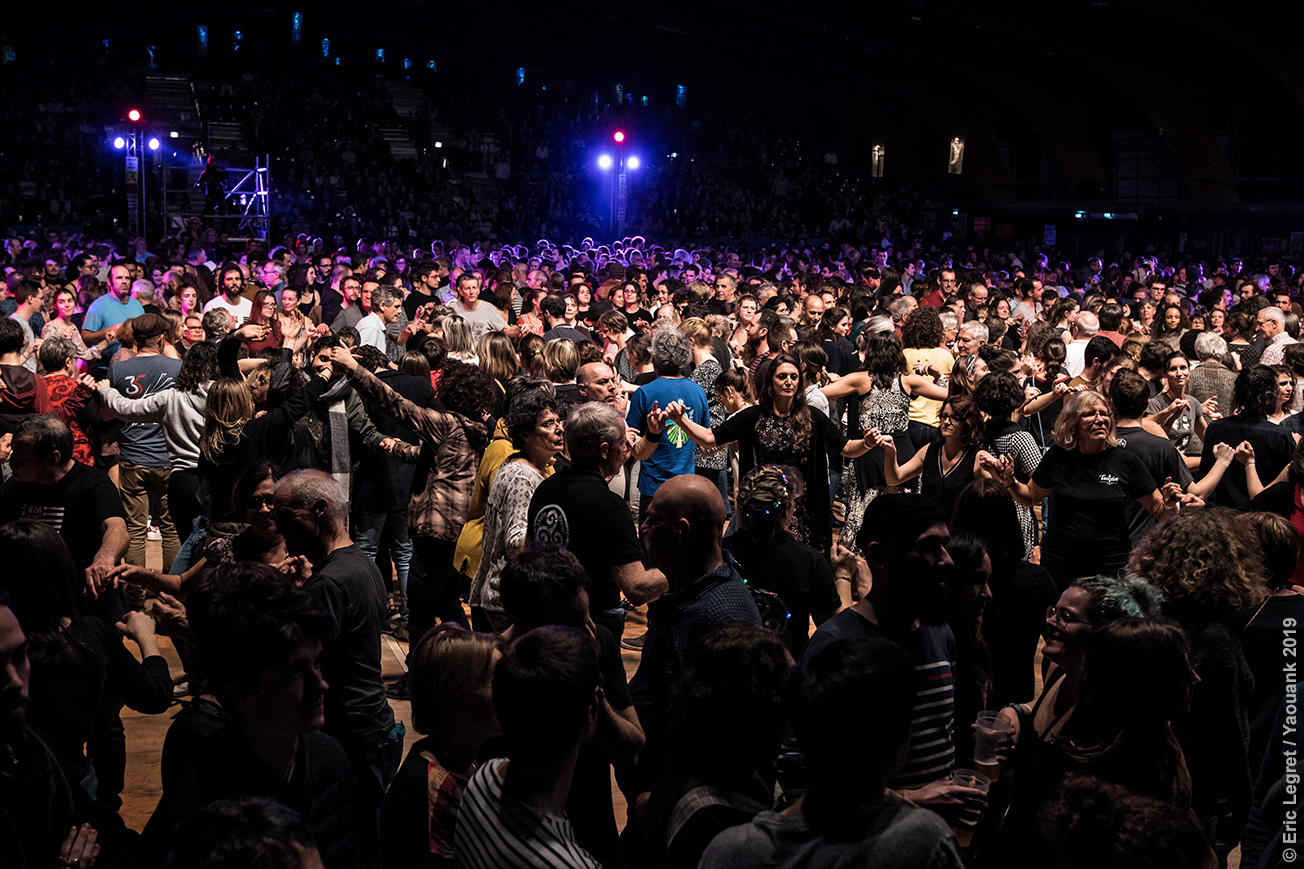Dancing into the small hours with ten, a hundred, a thousand, ten thousand others, in a warehouse, a theatre, or directly under the stars…welcome to the fest-noz! Literally meaning ‘festival of the night’ in Breton, this event which is very particular to Brittany has experienced an undeniably high success rate of late. You may think the fest-noz has always existed in its current format, so rooted is it in the hearts (and feet) of those who come to dance. But actually, this type of gathering has only existed since the 1950s, and not always under the same name. To understand its evolution, it’s time to travel back to the beginning of the 20th century.
Dancing at home
In rural society, people mostly danced with their family and neighbours at the end of a hard farming season, and also during vigils at home. At the time, song and dance were intimately linked: singers would stand in the middle of the circle made by the dancers. Often, they would dance only one type of dance, that of the local area: the gavotte calanhel in the Callac area, the Bazouges avant-deux, the ridée in the Vannetais, or the dañs round in the Pays pagan of northwest Brittany. People would also dance at bigger celebrations like wedding or pardon ceremonies. It was an opportunity to ask for and listen to local musicians: bombarde and binioù kozh pipers, accordion players, violinists, clarinettists or even vielle or veuze players. These musicians were nearly always also millers, bistrot owners, watchmakers or even marriage brokers! However, these customs gradually died out. During the interwar period, the first bals much looked-forward to by the young, were organised in market towns. “The fest-noz seemed doomed to complete extinction, replaced by bals in dance halls, with music provided by accordion players, or small groups of musicians, who represented a much aspired-to level of modernity”, explains ethnologist Fañch Postic. Then during the Occupation an unexpected phenomenon occurred. Since dances were prohibited, certain traditional dances began to appear again in rural areas, hidden from view.
Right place, right time...
In the 1950s, Breton culture crept quietly out of the shadows. Bagadoù and Celtic circles were quickly established in Brittany and Paris. It was around this time that Loeiz Roparz, who was passionate about song and dance, engineered the fest-noz revival. In 1954 in Poullaouen, a young Roparz organised the first kan ha diskan singing competition as a way of forming singer couples. It was the beginning of the fest-noz we know today. “They take place in a village hall, rather than on a farm, and the singers are not part of the dancing, standing instead on a stage with a microphone,” explains Fañch Postic. The idea was an immediate success and the bal breton as it was known then, was included in the Fêtes de Cornouaille programme in 1964.
Where, O Where Are the Girls?
A place to meet people and have a good time, today's festoù-noz are organised all over Brittany as well as further afield. Since 5th December 2012, it has been listed on the UNESCO inventory for Intangible Cultural Heritage. Breton men and women alike are such fans that even during the 2020 lockdown they danced together via video link! Today, there is a new challenge: giving more space to women on stage. The numbers speak for themselves. At the 12 most popular festoù-noz in Brittany, only 9% of the musicians on stage are women. The fest-noz has always moved with the times. Let’s hope that in this too, change will happen.
Translated by Tilly O’Neill

